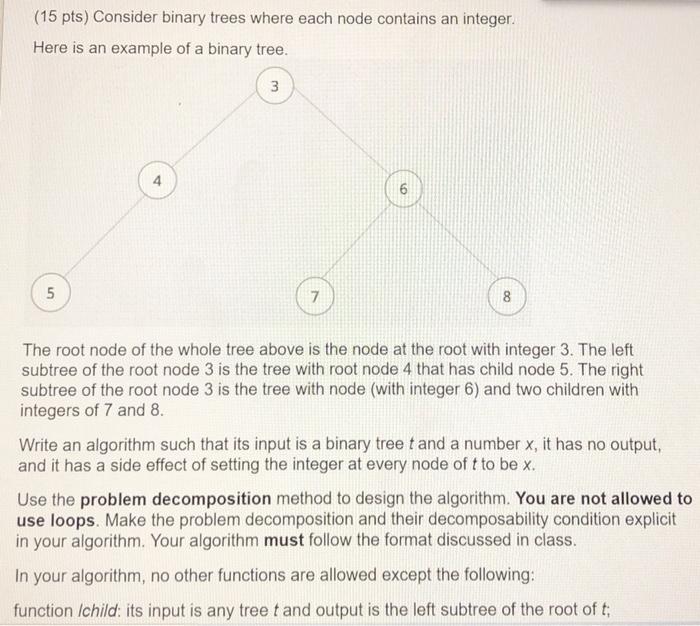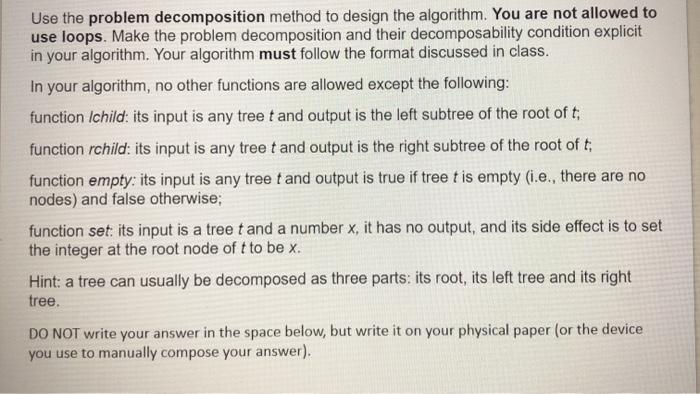Answered step by step
Verified Expert Solution
Question
1 Approved Answer
(15 pts) Consider binary trees where each node contains an integer. Here is an example of a binary tree. 3 6 5 5 7 8


Step by Step Solution
There are 3 Steps involved in it
Step: 1

Get Instant Access to Expert-Tailored Solutions
See step-by-step solutions with expert insights and AI powered tools for academic success
Step: 2

Step: 3

Ace Your Homework with AI
Get the answers you need in no time with our AI-driven, step-by-step assistance
Get Started


